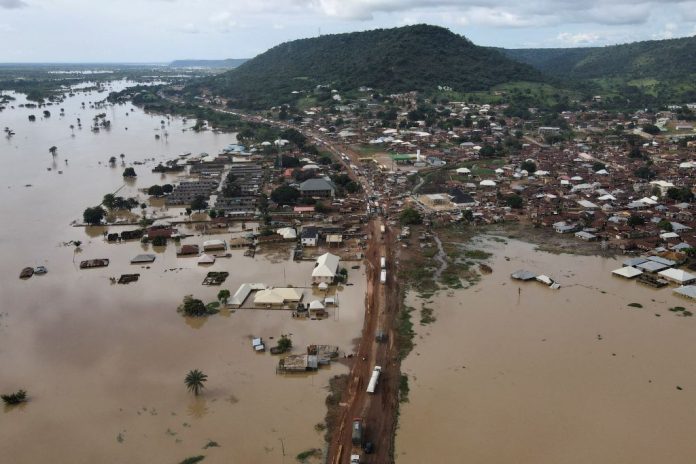Nigeria is bracing for a potentially devastating flood season, with 30 states and the Federal Capital Territory, Abuja, expected to be affected.
The Federal Government has predicted that 1,249 communities in 176 local governments will be inundated with floodwaters, displacing thousands of people and causing widespread destruction.
The prediction is based on the 2025 Annual Flood Outlook, unveiled by the Nigeria Hydrological Services Agency (NIHSA).
The agency’s Director General, Umar Mohammed, explained that the forecast is the result of continuous feedback, technological advancement, and broad inter-agency collaboration.
“We are transforming flood data into real-time decisions and impactful resilience-building. Our focus has expanded to assess sectoral impacts on health, education, agriculture, and infrastructure, offering more robust tools to policymakers and disaster risk managers,” he said.
The High-Risk States
According to the Minister of Water Resources and Sanitation, Prof Joseph Utsev, the high flood-risk states include Abia, Adamawa, Akwa Ibom, Anambra, Bauchi, Bayelsa, Benue, Borno, Cross-River, Delta, Ebonyi, Edo, Gombe, Imo, and Jigawa. Others are Kebbi, Kogi, Kwara, Lagos, Nasarawa, Niger, Ogun, Ondo, Osun, Oyo, Rivers, Sokoto, Taraba, Yobe, Zamfara, and the FCT.
These states are expected to experience heavy flooding between April and November, with coastal and riverine areas particularly vulnerable to the rise in sea level and tidal surge.
The minister decried that flooding remains one of the devastating natural disasters in Nigeria, with climate change accelerating its frequency and severity.
Preparing for the Worst
To mitigate the impact, states are taking proactive measures. Anambra State has started clearing blocked drainages and evacuating structures blocking water flow. The state government has also alerted residents living in flood-prone areas to prepare for possible flooding.
“The state government has started de-silting water channels and clearing blocked drainages. Residents of these communities have been notified and alerted to the impending flooding,”* said Uche Okalawan, Deputy Publicity Secretary of the Anambra State Emergency Management Agency.
Kwara State is expanding river courses in flood-prone areas, while Ogun State is engaging local governments to domesticate flood alerts. Delta State has commenced clearing water channels and public sensitization.
“We have issued our flood alert some weeks back, and we are also domesticating this with our local governments,” said Ola Oresanya, Ogun State Commissioner for Environment.
Other States Take Action
Gombe State has sustained its awareness campaign to flood-prone communities, while Nasarawa State is educating residents about the dangers of living in flood-prone areas. Borno State has set up a committee to implement initiatives that would prevent flooding across the state.
The Federal Government has urged stakeholders to prioritize early response and proper planning to mitigate the impact of flooding.
“This outlook isn’t just about numbers, it’s about protecting lives and livelihoods,” said Richard Pheelangwah, Permanent Secretary of the Ministry of Water Resources and Sanitation.
As the rainy season approaches, Nigeria’s states and the FCT are gearing up to face the challenge of severe flooding. With proper planning and preparation, the impact of this natural disaster can be minimized. The Federal Government’s prediction of 1,249 communities being affected is a wake-up call for all stakeholders to take action.
“The 2025 Annual Flood Outlook shows that 1,249 communities in 176 Local Government Areas in 30 States and FCT fall within the High Flood Risk Areas, while 2,187 communities in 293 LGAs in 36 states of the federation and the FCT fall within the Moderate Flood Risk Areas,” Prof Utsev added.
Like 👍, Comment, share this article, and Follow us on our social media handles.







